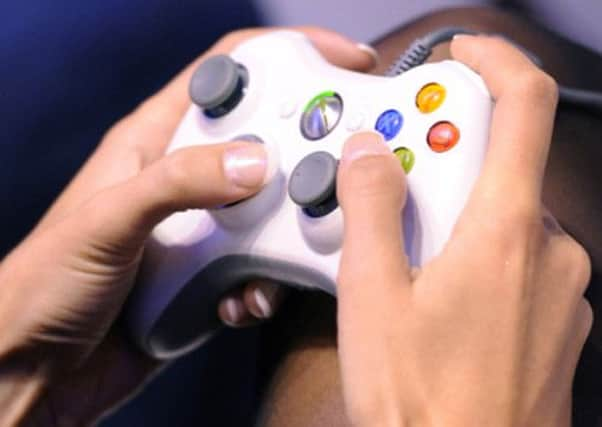Scotsman games: Education and games part 1


AT its worst, the market for children’s games on smartphones and tablets is exploited by developers with scant regard for either design or way digital tools can complement traditional learning methods, with a minority of developers content to include a host of in-app drip pricing in order to trick youngsters into believing they are making progress, all the while bleeding the wallets and purses of parents.
It is a sector of the games industry that has come under increased scrutiny following last month’s Office of Fair Trading report, which attempted to dissuade such aggressively commercial approaches by putting forward a series of principles covering in-app purchases, advertising and other activities.
Advertisement
Hide AdAdvertisement
Hide AdFortunately, not every developer requires intervention from a government watchdog in order to make better products. In Scotland, a welter of companies are demonstrating how titles for youngsters can not only offer imaginative interpretations of long-established artforms, but exert influence over traditional media.
Mr Shingu’s Paper Halloween by Stormcloud Games and My Sock Monster by Ludometrics are prime examples of how games designed for children can boast all the ingenuity and craft of triple A releases. The former – which is free on iOS and Android, with no in-app purchases or third party adverts - is the latest in a successful series from the Dundee-based studio which struck upon the idea of creating a modern fusion of origami and Tamagotchi. The inaugural title, Paper Zoo, a self-funded IP which also benefited from the University of Abertay’s Prototype Fund, proved a critical and commercial smash upon it release in June, and for a time was the number one children’s game in China.
“I’m often asked to chat to the students at Abertay about game design and concept generation and I always say the same thing: the best game ideas come from looking outside of games,” reflects Stormcoud’s Frank Arnot. “Get your inspiration from books, from art, from the natural world. Try to maintain a child-like sense of wonder and fun – look at everything and ask, ‘Where’s the game in that?’”
A veteran of the Scottish gaming scene who started out on the influential Lemmings series at DMA Design and went on to become studio director at 4J Studios, Arnot was determined his virtual orgami concept be rooted in authentic designs. A Google search turned up the work of expert Fumiaki Shingu. “His work was perfect for games,” recalls Arnot. “His designs were simple and cute, very Nintendoesque.”
The fact Mr Shingyu lived 5,000 miles away in Tokyo and was not particularly au fait with Dundonian patois did not deter Arnot and his team. A delegation from Scottish Development International met the origami master on their behalf, helping with contract negotiations and translations.
With a third title, Paper Ocean, in the works, Stormcloud – who have also released a game based on the picture book, Room on the Broom, by former Children’s Laureate, Julia Donaldson’s - are excited at the prospect of working with Mr Shingu on future projects. “Fumiaki has a huge back catalogue of origami designs so we have scope for a large number of games,” adds Arnot. “He’s also happy to create new designs for us too, but he has so many designs that’s not been necessary yet.”
For their game, Ludometrics were spared the problem of language barriers. The idea for My Sock Monster, an interactive storybook for the iPad, came about following a chance conversation between the studio’s founder, David Thomson, and Daniel Freytag, a designer and husband of children’ author and illustrator, Lorna Freytag.
Having struck upon an idea for an interactive book, Lorna drew up a series of storyboards. After collaboration between all three parties, it soon blossomed into a fully fledged app (and one which also eschews the menace of in-app purchases and advertising).
Advertisement
Hide AdAdvertisement
Hide AdWhereas similar projects have taken existing books for their inspiration, the reverse is true of My Sock Monster - published by Junoberry - with a traditional printed storybook to follow. “Sock Monster was always about telling the story in an interactive format first and foremost, and it’s influenced the physical book in that the story was edited to fit what made sense for the iPad,” says Thomson. “Interestingly, there’s been a lot of requests from parents to have both formats available.
“I think all media and art forms influence all others, so I find it difficult to define exactly how one directly impacts another. Adaptation is the key word - there’s a reason the film of the book is never quite the same, and it’s all about finding the best way to tell the story in the form that you’re using. I’d say we’ve all learned a lot from making this app, and that will undoubtedly influence everything we do next, whether that’s together or in our other projects.”
Freytag agrees: “The new bit for me was learning how to animate my character. When I first started sketching out the ideas I had to change my way of thinking slightly as normally, I just visualise a flat image. But to do Sock Monster I had to think about how i was going to make him move and do things, or rather how David was going to make him do things.
“I am foremost a printed book lover and collector and have worked in many children’s bookshops over the years, but I know times are changing and i think combining iPad versions of books with the printed version catches everyone’s attention. It helps steer non-book-readers towards printed versions too.”